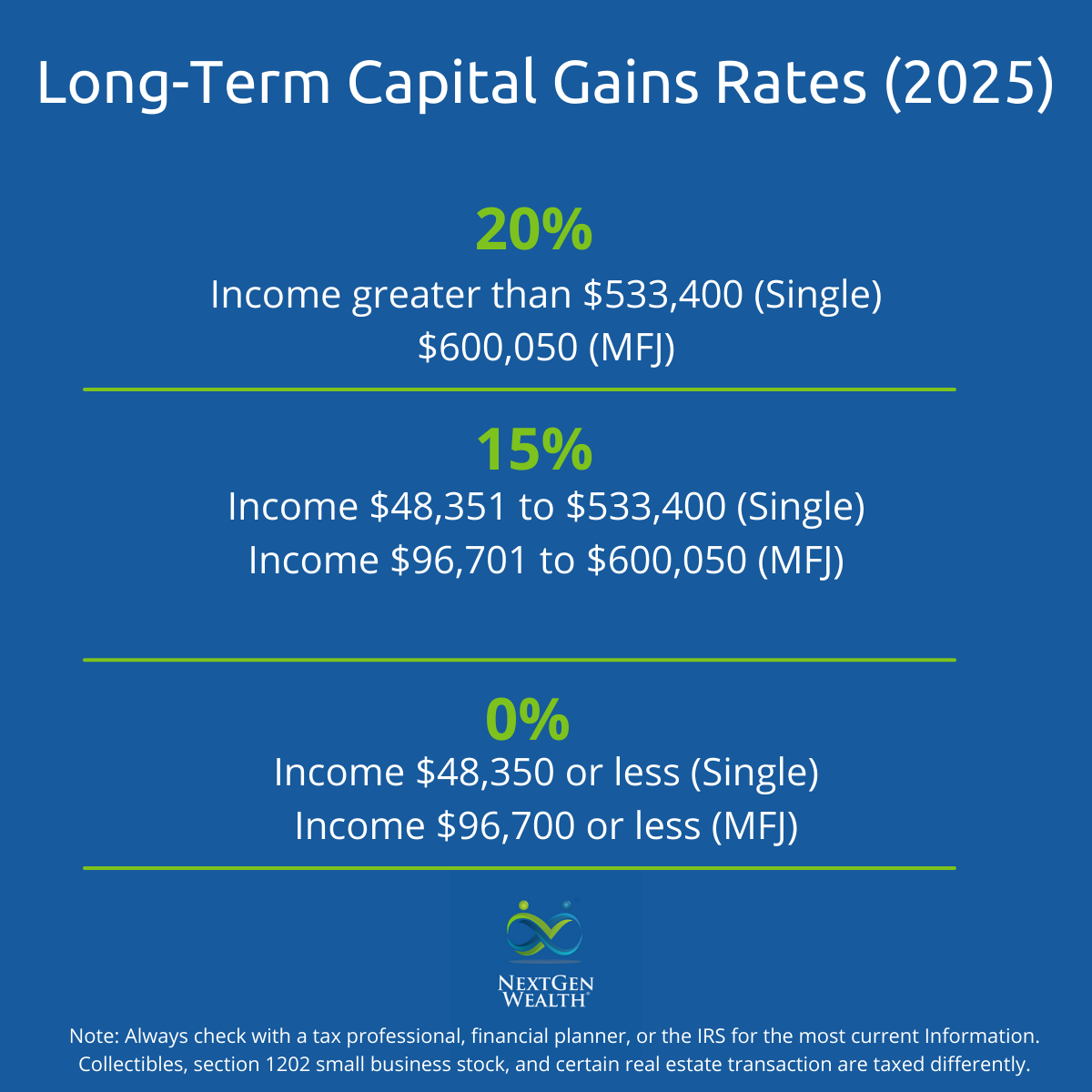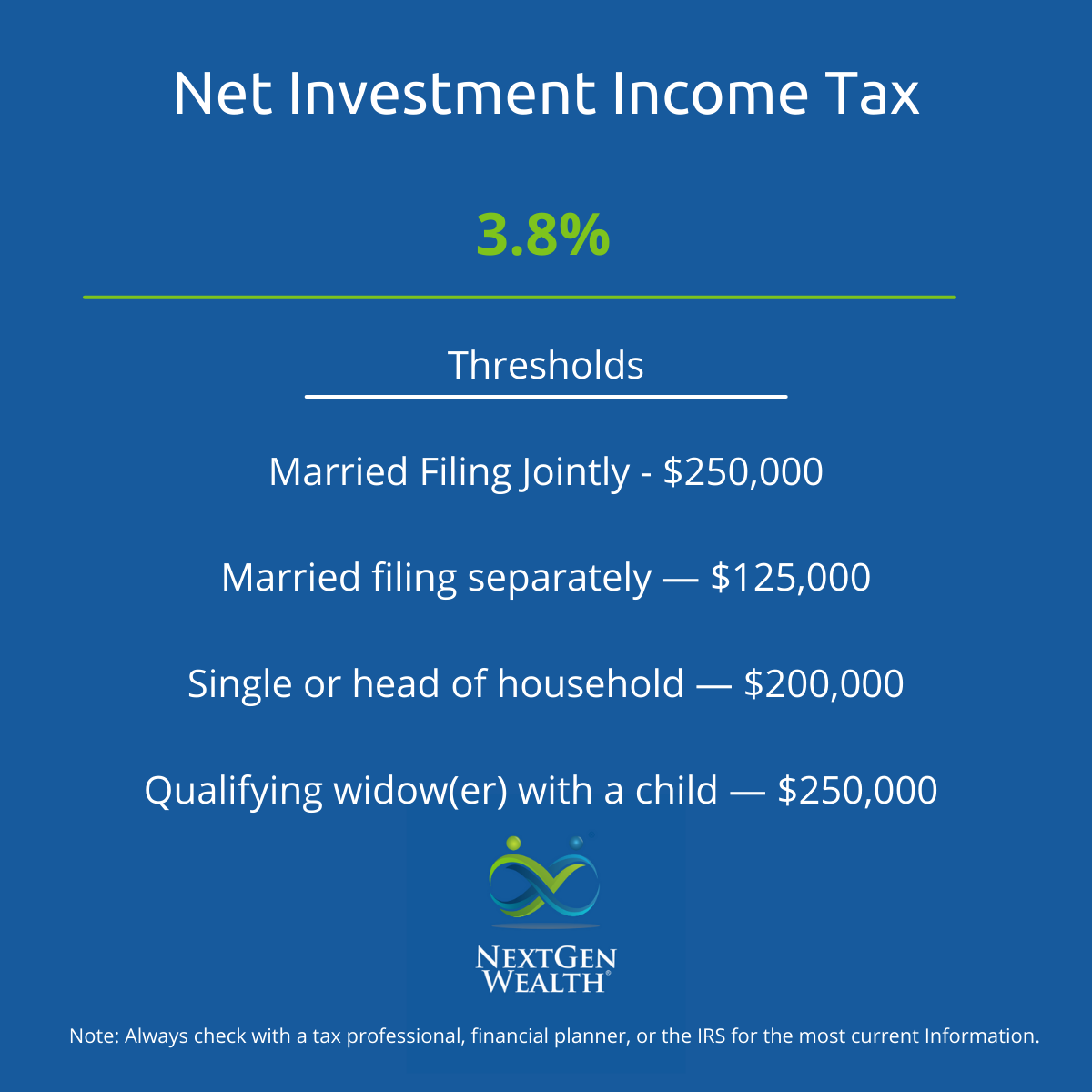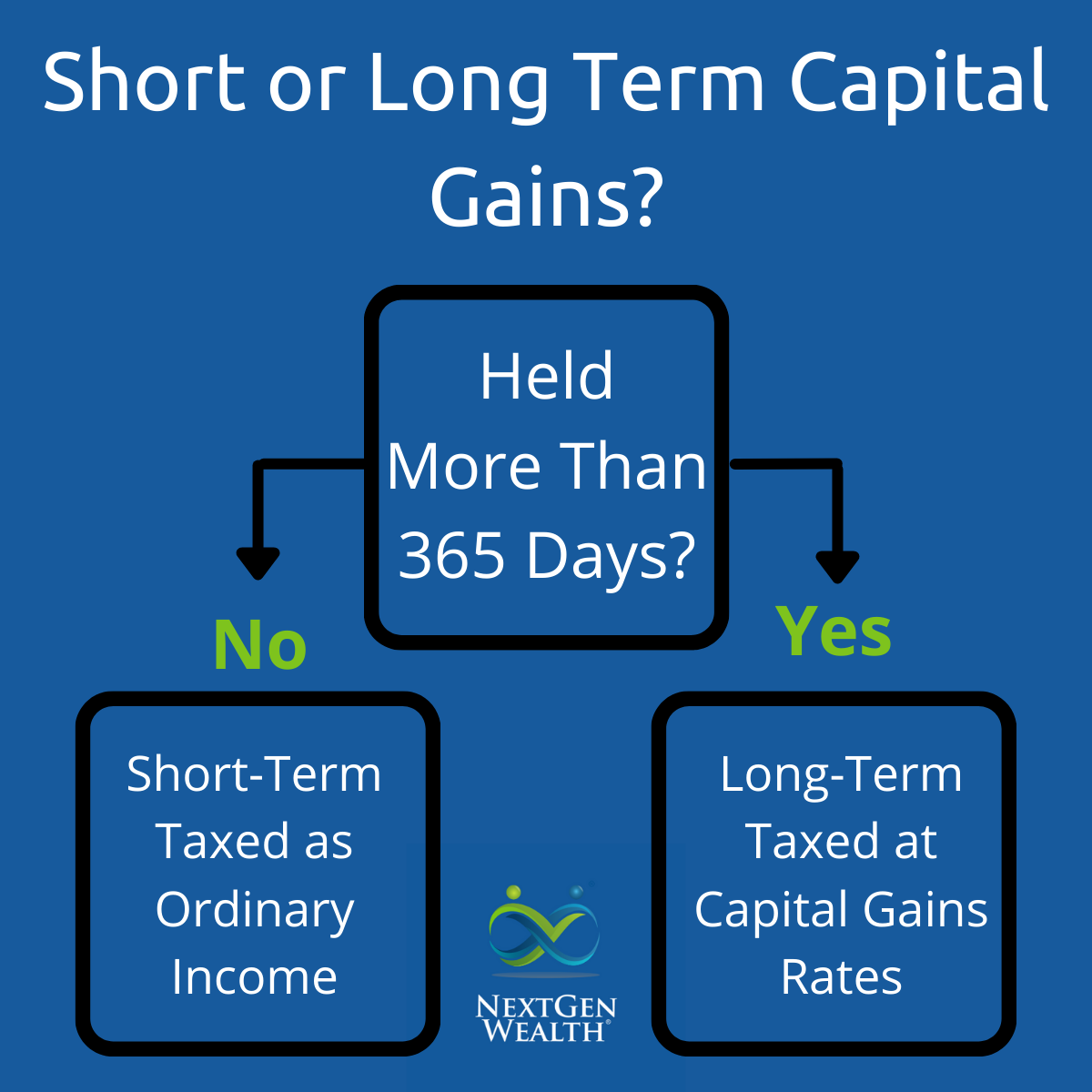Can Capital Gains Push Me Into a Higher Tax Bracket?

This post was last updated on January 06, 2025, to reflect all updated information and best serve your needs.
Understanding when capital gains can push you into a higher tax bracket is very important. The final step of investing success is keeping your hard-earned cash where it belongs – in your bank account!
The first thing to consider is exactly what assets are capital gains and when they are taxed as such. For the most part, anything that you own and later sell for a profit can be considered a capital gain.
What The IRS Says About Capital Gains and Tax Rates
The IRS taxes capital gains as regular taxable income or at a special capital gains rate depending on how long you’ve held the underlying asset. There are always exceptions too, so it's important to know the rules.
Many investors learn the hard way that a set it and forget it approach can lead to major tax consequences if you don’t understand how the underlying asset works. Understanding the mechanics of capital gains tax is important.
Short-Term Capital Gains
Gains from assets held for 1 year or less are Short-Term Capital Gains. That’s 365 days or less.
Just a note, don’t’ let leap years fool you. You have to count the days. As an example, if you buy a share of stock in XYZ Company on February 1st and then sell it on February 15th the same year, you will incur a short-term capital gain.
Short-term capital gains are taxed at ordinary income tax rates. Keep in mind that in our progressive tax system, only the income within the “brackets” is taxed at that rate. The current tax brackets are listed below.

Long-Term Capital Gains
For any asset held over 1-year, that’s 366 days or more, the gain is taxed at a separate rate from your ordinary income. If your ordinary income reaches into the highest 5 income tax brackets above, then long-term capital gains treatment is especially helpful.
Always check with the IRS, but the current rates for 2025 are:

It’s important to note that these tax brackets are based on your total Adjusted Gross Income (AGI). If this sounds confusing, that’s because it really can be.
Let’s say you made $100,000 last year and also sold $25,000 of stock in your taxable brokerage account with a total gain of $5,000. Your AGI would be $105,000. However, $100,000 would be taxed at your ordinary income rates and then $5,000 would be taxed at your long-term capital gains rate.
Net Investment Income Tax
If you have investment income, you may also be subject to Net Investment Income Tax (NIIT). This is an additional tax on the lesser of the total investment income or income above the applicable adjusted gross income.
These thresholds are listed below.

My Investments Did Really Well, Now What?
Congratulations! Here’s where we start to get a little more serious. The main things you need to know are your cost basis, holding period, and sell price. With this information on hand, we can work through this together.
Understanding Your Cost Basis
Cost basis is a term that simply means the amount that an asset cost you to obtain it. In some cases, this may not be the exact amount that you paid for the asset.
For instance, if there was a transaction fee, this can increase your basis. This treatment is an advantage to you because you already paid the fee.
It wouldn’t be fair to tax you on the transaction fee amount as well. Who said the IRS couldn’t be nice every once in awhile?
Fortunately, modern technology makes finding cost basis much easier. You can look at your holdings, cost basis, lot details, and other useful information by accessing your account details online or contacting your brokerage directly.
It is important to look this up, especially if you have purchased the same asset more than once. If you have a financial planner, they will have access to this as well.
One thing that you probably can't get from your account details are instances of when a basis should different from what you paid. In the case of a gift or inheritance, your account may only reflect certain details such as the starting balance.
There are very specific rules regarding your basis in these assets that you need to be aware of. For inherited assets, your holding period is often carried over. It is important to keep track of these funds to ensure you get preferential treatment.
Holding Period for Capital Gains
First, did you hold each investment for 366 days or longer? If yes, it’s taxed at the long-term capital gains rate.
If not, then it will be taxed as ordinary income. This is a major distinction in some cases.

Calculate your Total Gain
The next thing to do is figure out your total gain. You probably don’t need the explanation, but this is your sale price minus your cost basis. Most brokerage firms will automatically figure up your total gain based on your cost basis using a first in first out (FIFO) method.
Now you know exactly how much your gain is and whether you have short or long-term capital gains. Next we can start figuring out how you’ll be taxed.
What Tax Rate Will My Money Be Taxed At?
The main variables we will need to finish the equation include your filing status and your Adjusted Gross Income (AGI). To give you an idea, you can estimate based on your AGI from your last tax return filed. If your situation is similar this year, then you can get a ballpark figure.
Add short-term and long-term capital gains to your estimated AGI and look at the federal income tax and capital gains brackets above. These change often, so be sure to get the most up to date rates on the IRS website.
How Do I Avoid Paying Short-Term Capital Gains?
The safest bet is to engage a tax or financial planning professional. Making a mistake or not catching a mistake might potentially cost you way more than a consultation with an experienced professional. This is even more important if you have capital gains on a recurring basis such as employee stock options or deferred compensation plans.
A Note on Dividends
If you’re not paying attention, you might incur short-term capital gains if you have elected to reinvest dividends. This can happen because you are technically paid a dividend, then it is automatically used to purchase additional shares. Those holdings have a cost basis and holding period based on when the dividend was reinvested.
In that case, assuming you are using a FIFO method of selling shares, make sure you leave at least the same amount of dividends paid during the last 365 days in the account.
Otherwise, understand that you may incur some capital gains. You may be able to select the exact shares you want to sell, but this can be a tedious process.
For example, assume you purchased $10,000 of stock 13 months ago and received $500 in dividends over the last 365 days. If you sold today at $15,000, you would have $500 of short-term capital gains and $4,500 of long-term capital gains.
To avoid the short-term capital gains, you will want to sell all except the shares purchased with dividends (equaling $500) to avoid having it taxed at the higher ordinary income rate.
How Can I Reduce My Short-Term Capital Gains?
It’s important to minimize short-term capital gains so that you pay the lower long-term capital gains rate. However, that may not always be possible depending on your individual circumstances.
Regardless, you can lower your overall tax bill by using tax-saving strategies allowed by the IRS. To be clear, not all tax strategies will apply to your situation. You should consider each option carefully.
Not All Tools Are Created Equal
The strategies to minimize capital gains vary in complexity. Some strategies include very complex and sometimes expensive products. Those typically end up feeling a lot like a treadmill.
You do a whole lot of moving around, but ultimately feel like you’re right where you started. This is not what we want to do.
Common Strategies for Offsetting Capital Gains
The more common methods we’ll talk about here include contributing to retirement or other qualified accounts and charitable contributions. These are strategies that you can employ that are allowed and often encouraged by tax laws.
Making Additional Retirement Contributions or Other Qualified Accounts
Making additional contributions to qualified retirement accounts can lower your taxable income and offset your tax liabilities for the year. If you’re already maxing your accounts, such as your 401k and IRA, then there may still be other similar options.
Contributing to a Health Savings Account, if you qualify, can reduce your taxes. In some states contributions to a 529 account for college savings are tax deductible, but only at the state level.
Making Charitable Contributions to Reduce Capital Gains
Charitable giving is a popular option for reducing taxes. Often the tax benefits are not the primary reason for giving.
However, if you are charitably inclined, aligning your giving to charity with the methods available for reducing taxes should be a consideration. Not only does planning around charitable giving reduce your taxes, it can often lead to more money going to your charity of choice. That’s truly a win-win.
You may be aware of deductions for charitable giving, but additional tools such as a Donor Advised Fund (DAF) or bunching can be used to offset large one-time tax bills. If giving is something you want to do, then these are important things to consider.
Additional Strategies to Consider
Other considerations are Net Unrealized Appreciation (NUA) strategies, Tax Gain or Tax Loss Harvesting, and gifting or Income Shifting. These can be complicated and may not apply to your situation. Be sure to consult a professional before employing more advanced tax strategies.
The Bottom Line on Capital Gains and Your Tax Bracket
Overall, if you have a significant amount of taxable assets that you are selling or exchanging in some way, you need to be aware of how those gains will be taxed. There are a variety of factors that come into play and your specific situation is going to be different in a lot of ways.
Capital gains can push you into a higher tax bracket and cost you more in taxes.
Getting tax projections wrong could be the difference between paying 0% to 20% or paying 10% to 37%. To put that in perspective, a 17% difference (top long-term capital gains rate vs top marginal tax rate) on $100,000 of income is $17,000.
In other words, for every 1% error, you could potentially be paying your dear Uncle Sam an extra $1,000.
This is when paying for expert assistance really can make a big difference. NextGen Wealth offers a free, no obligation Financial Assessment to cover not only capital gains, but every aspect of your financial life as well.


